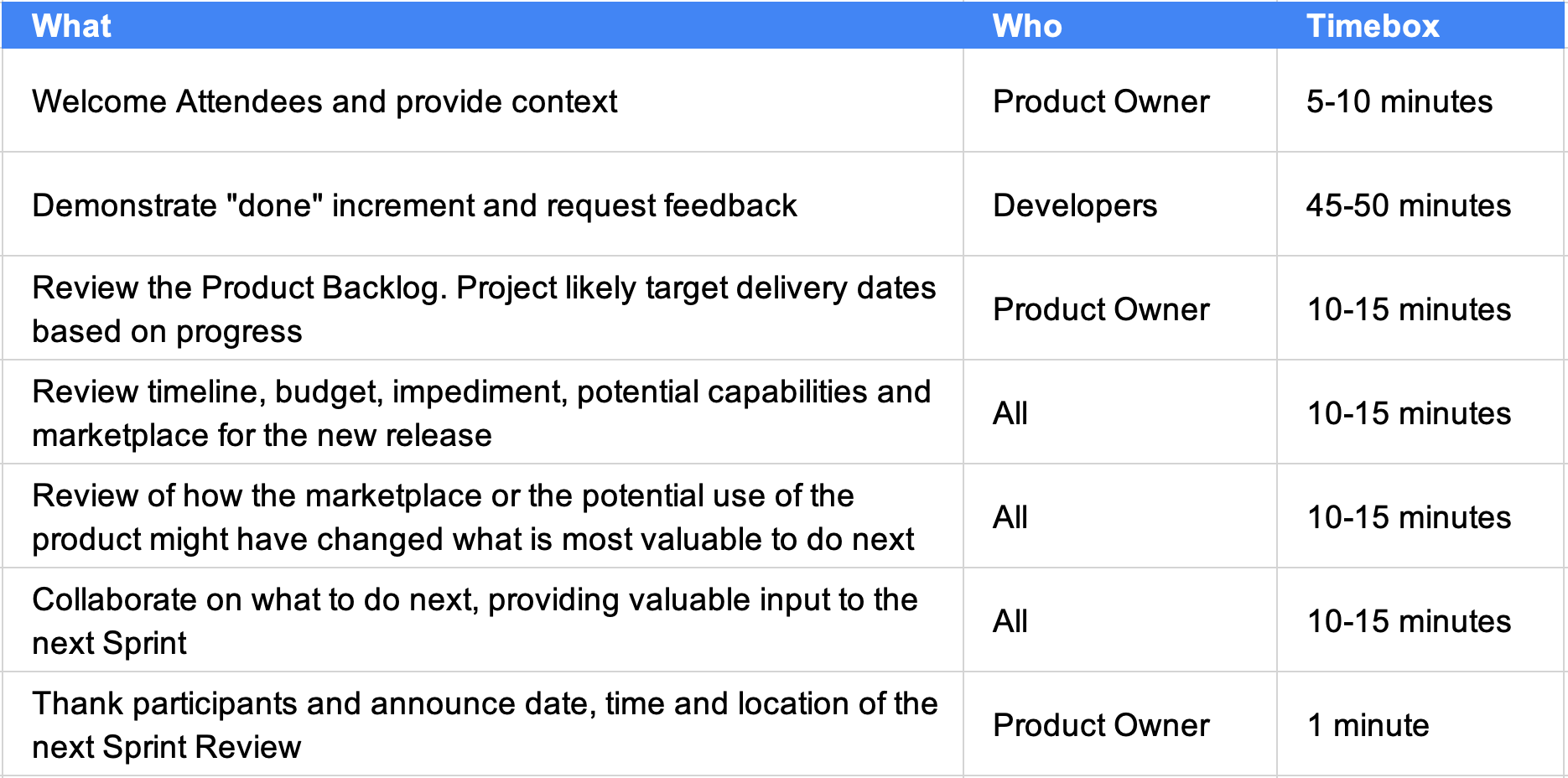Learn about purchasing for teams
Sample Sprint Review Agenda & Tips from a Coach

A review and demonstration are not the same thing — whether we’re talking about scrum or the destructive power of a moon-sized space station. The Oxford Dictionary supports this view:
Review: (noun) an examination of something, with the intention of changing it if necessary.
Demo: (noun)an act of showing or explaining how something works or is done.
There is a reason we call it a sprint review and not a demo, and that reason is feedback. The Scrum Guide cites the purpose of the sprint review as "to inspect the outcome of the Sprint and determine future adaptations."
A sprint review is not a knowledge transfer, nor is it a courtesy view just before you shove the product out the door. Each scrum event is an opportunity for inspection and adaptation. For the sprint review it is inspection and adaptation of the product (or service) the team is building. If all the team does is show the finished work and call it a day, you are not getting the all important feedback that occurs through inspection, which means there is no adaptation going into the next sprint.
Related: The Four Scrum Events & How to Use Them
Recommended Agenda for a Sprint Review
The time boxes below are based on two-hour event, which is the recommended time box for a two-week sprint:

Explanations:
Provide context: Stakeholders may come and go from review to review. It is always good to remind everyone of the product goal and sprint goal — "Why are we doing this?" Don't assume everyone knows. Assumptions can lead to dark places.
Project likely dates: Using empirical data (cycle time, historical velocity, etc.) you can provide data based updates to when things might be ready. Instead of guessing, use data. Check out Henrik's Kniberg's Agile Product Ownership in a Nutshell video starting at 12:26 for an example of this in action.
Review timeline, budget, impediments, capabilities, and marketplace: Inspection and adaptation isn't just about the product you are building. How has the world around you changed since the last sprint? Did budgets get cut? Did a competitor just release a game changer? Did a new law get passed?
Related: Agile Retrospectives for Business Agility
Where Is the Scrum Master?
Astute readers have noticed the scrum master doesn't show up in the "Who" column. That doesn't mean that person is not necessarily present. It just means they are doing what they do best, creating an environment in which the scrum team can be successful. They are part of the "All" and likely someone to lean on when it comes to discussing impediments outside the team's control to resolve.
It's Never too Late to Improve
I've been coaching this agenda for several years, and the impact is often instant. I remember one notable event where the team had been using scrum for well over a year with their sprint review only covering the “Demonstrate ‘done’ increments and request feedback.” The sprint review rarely lasted more than 30 minutes and no one other than the engineering director was showing up.
We introduced this agenda and the product owner personally invited key stakeholders to the relaunch of the sprint review. The feedback was instant, good, and valuable. The next sprint review was even better attended, and the direction of the product started shifting subtlety sprint over sprint toward a better final product.
For more on this subject, please see “How to Run an Effective Sprint Review,” a companion article written by my colleague Kevin Rosengren.
About the Author
Joel Bancroft-Connors is a Principal Consultant at Applied Frameworks and a Scrum Alliance Certified Team Coach®. Known to many as “The Gorilla Coach,” Bancroft-Connors has over 20 years of experience coaching teams and managing products at blue chip software companies. He also holds certifications as a Scrum Alliance Certified Team Coach, and Product Management Professional.
Build alignment and momentum through better facilitation
Help your teams collaborate effectively and stay focused on outcomes that matter. The Certified Agile Facilitator (CAF) course from Scrum Alliance equips you with tools to lead engaging sessions and support teams in any environment.











